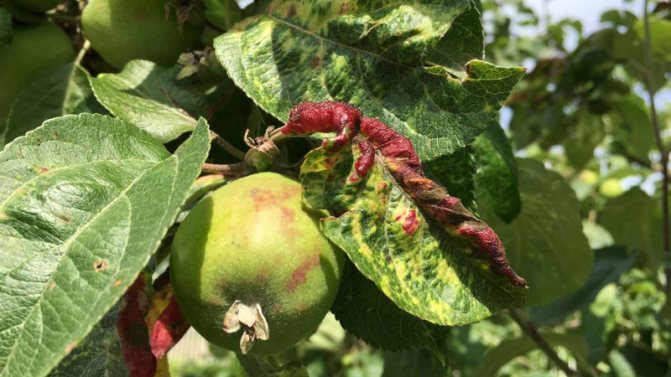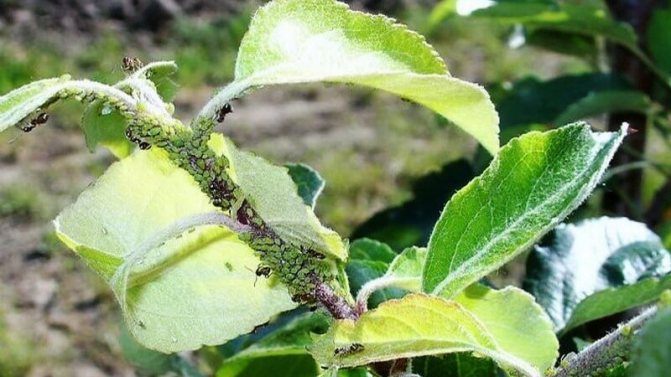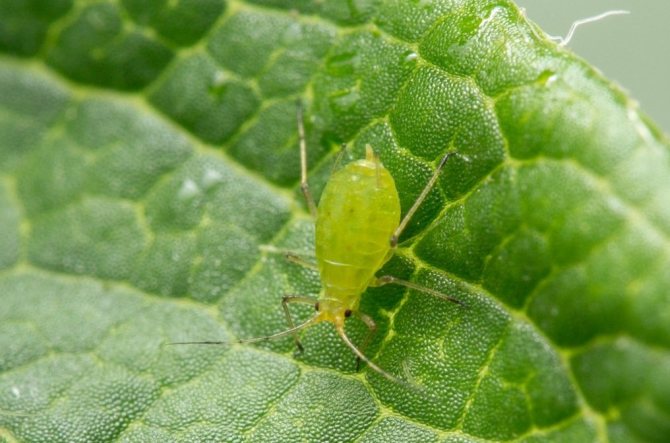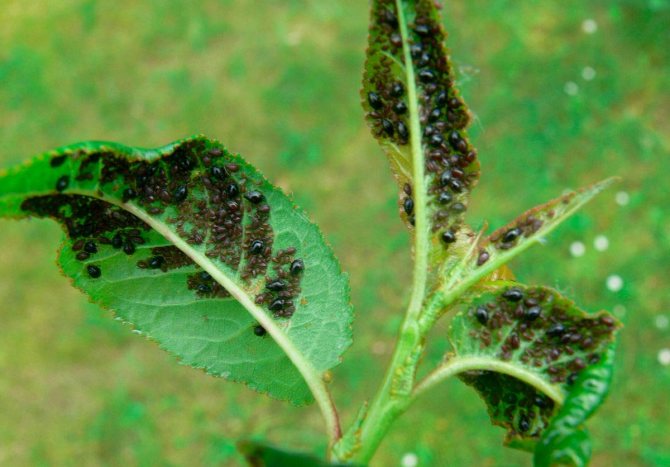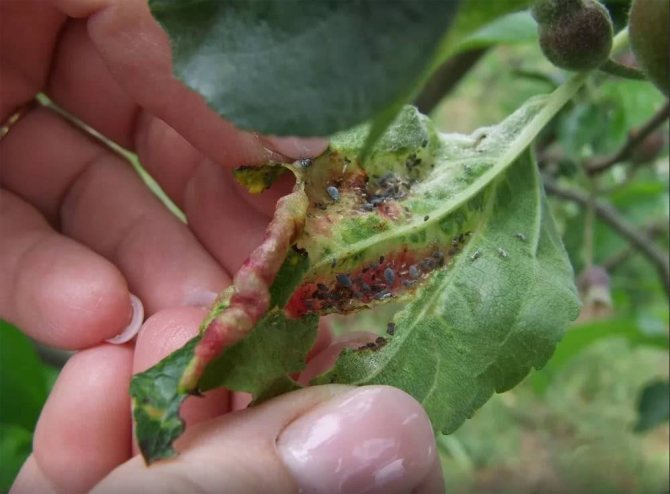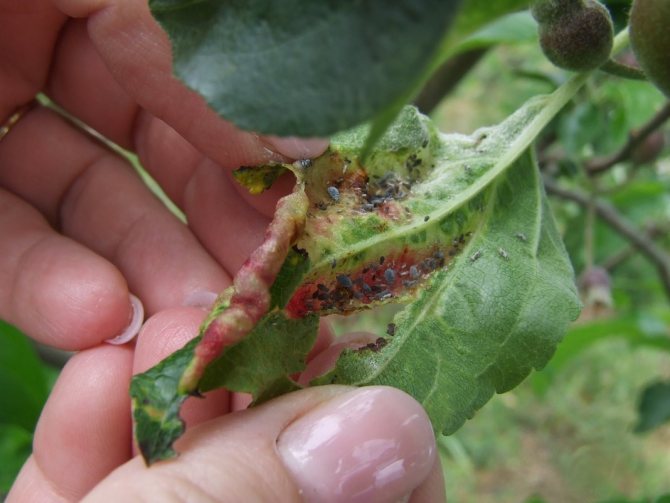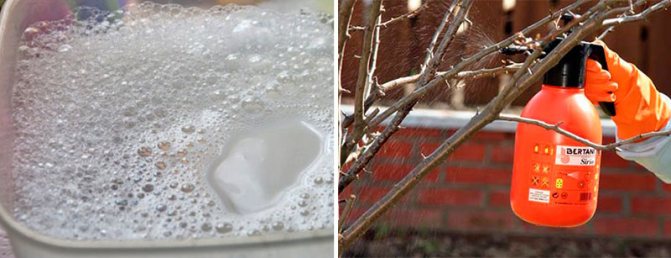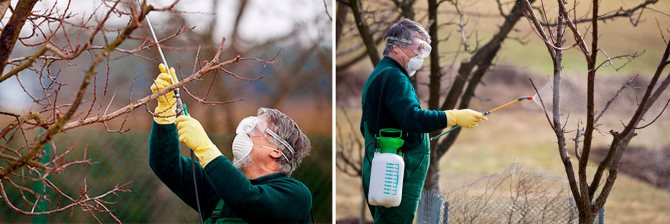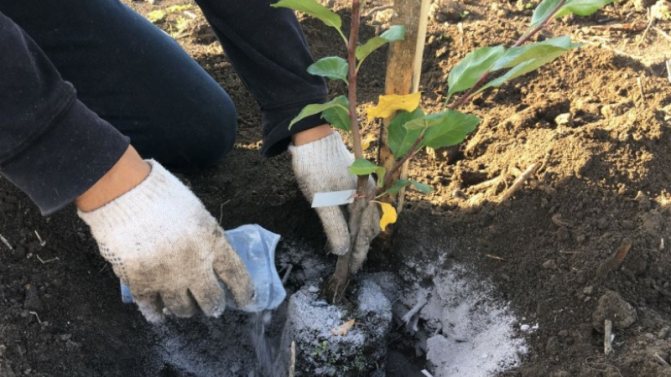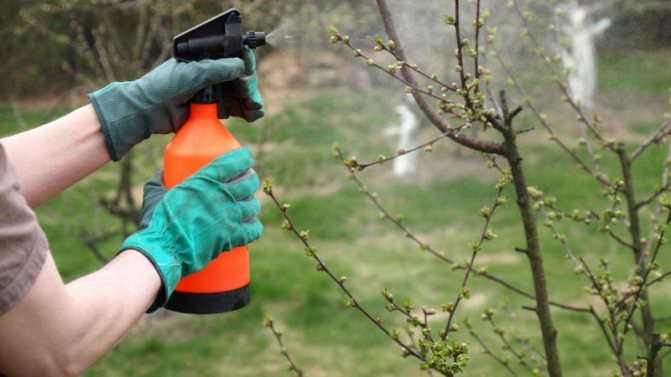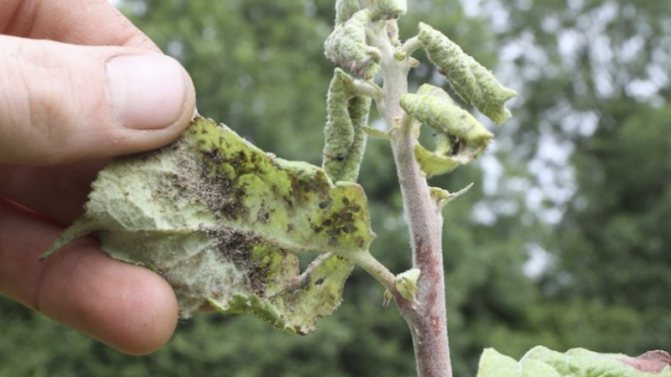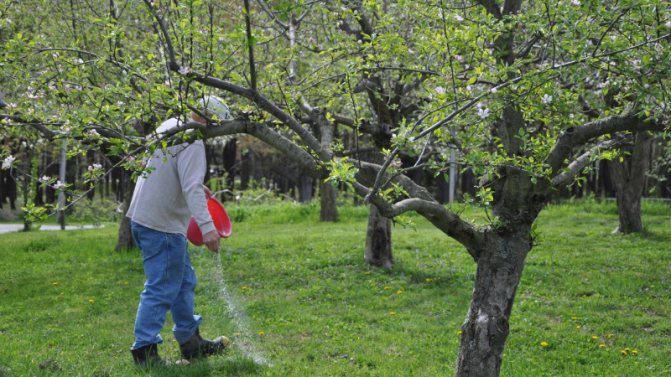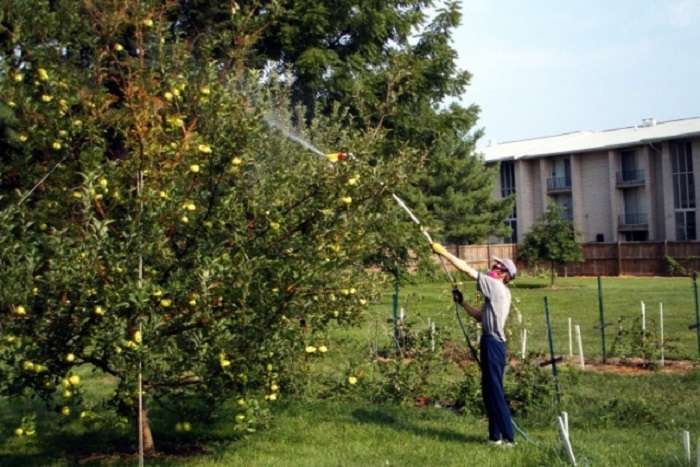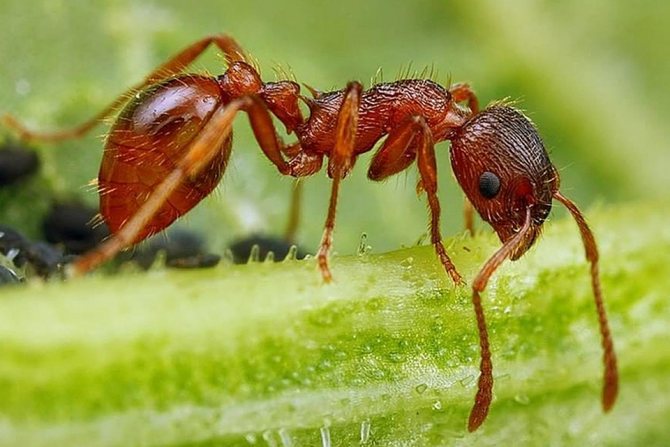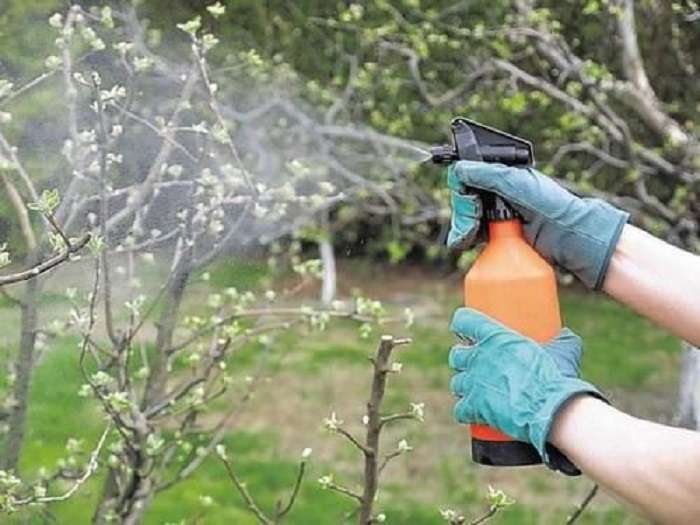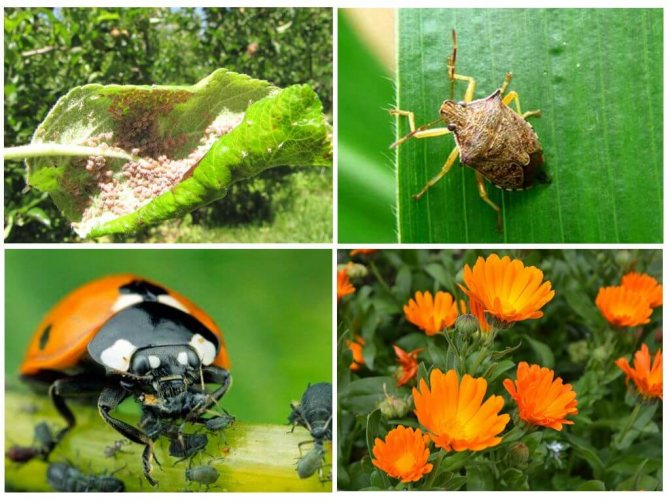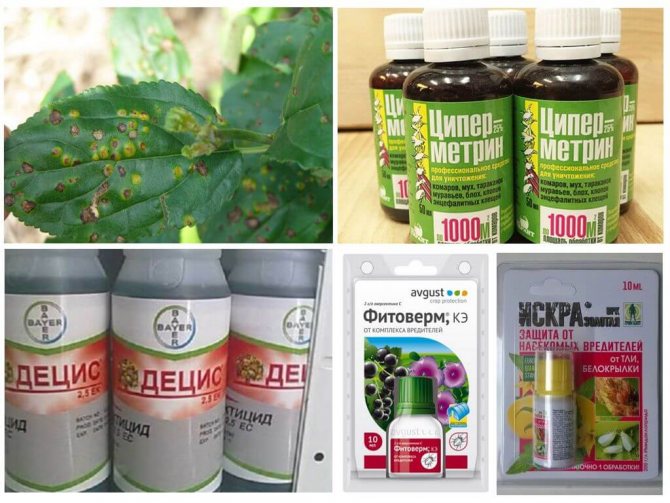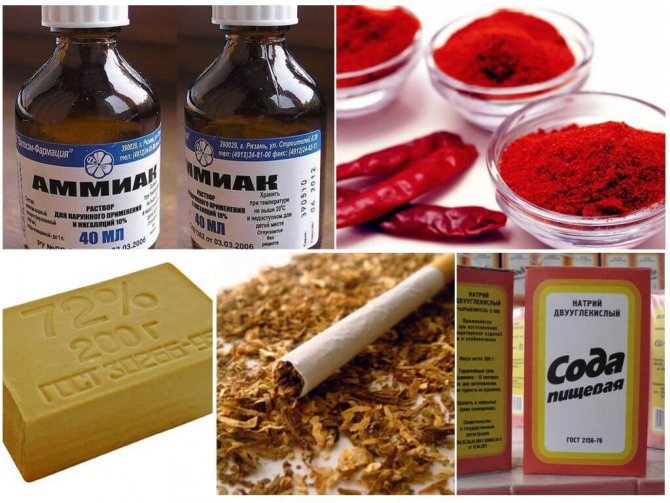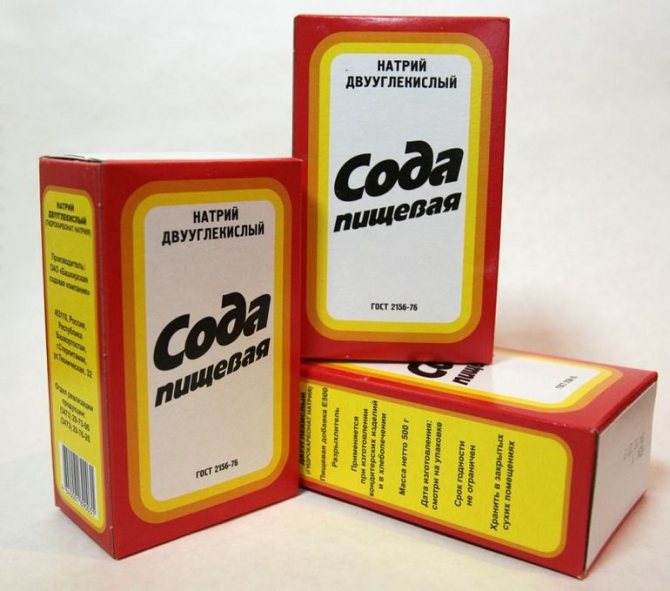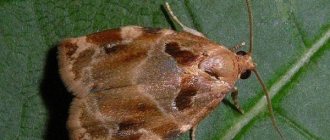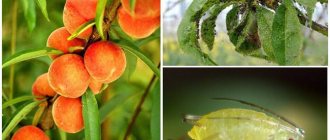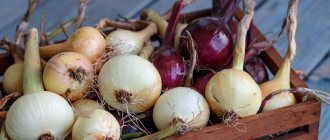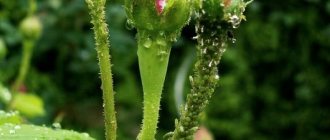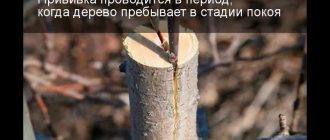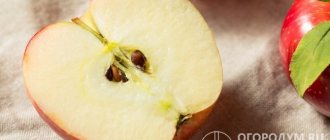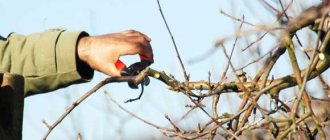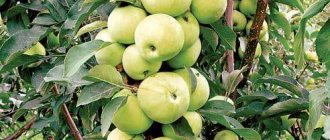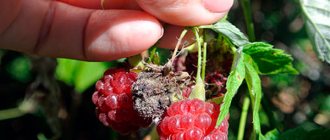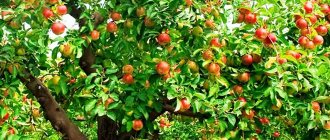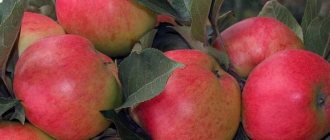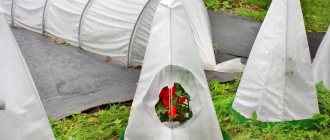The danger of aphids for the apple tree
Aphids on an apple tree are a small dangerous insect. This beetle is no more than 7 mm in size, it may differ in shade. It settles in colonies most often on young shoots, feeds on sap, the larvae are almost invisible. Due to the colony, a pad is formed on the leaves, which sticks together the young leaves. Due to constant exposure, ants appear that feed on sweet juice and carry aphids around the entire perimeter of the garden.
Green and red-gall aphids
Apple aphids can be of several types. It is classified for simplicity by shade. Red-gall aphid, it's just gallic or bloody, miniature, no more than 3 mm in size, yellow-green in color. Green aphid of the corresponding shade. Most often they settle on apple trees, pears, plums and quince.
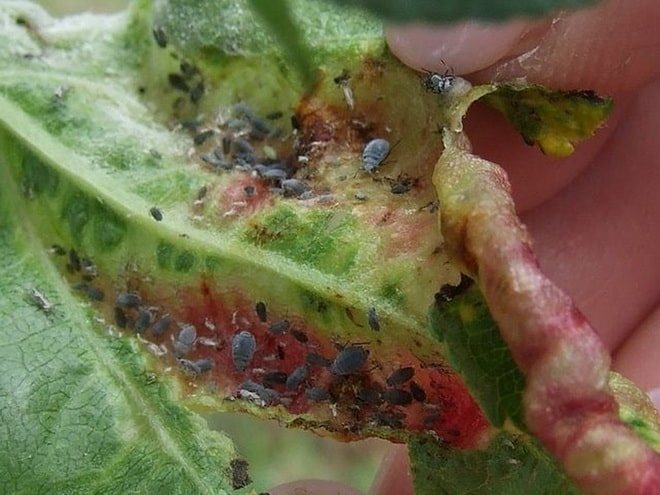
Red-haired aphid on the leaves of an apple tree.
Prophylaxis
Aphids appear on apple trees quite often, given this, you can try to prevent its settlement. It would be nice to build birdhouses on a tree, when birds such as sparrows, linnet, robins and tits settle in them, you can be calm about the condition of the trees, they feed on aphids and it does not linger on them for a long time.
It would also be nice if there were a lot of lacewings and ladybirds in the area with apple trees, which also feed on aphids, but anthills, on the contrary, need to be destroyed, since these insects protect the aphids that supply them with food.
You may also find it useful to learn about how to treat cabbage from aphids and caterpillars.
To help out the apple tree from pests will help the plants planted around it, which will scare off aphids: garlic, calendula, onions, tansy, tomatoes and Dalmatian chamomile. But bird cherry and viburnum should, on the contrary, be transplanted outside the site, these trees attract aphids.
Where does it appear in the trees
The pest attacks an apple tree in the garden, moving from an infected tree, which may even be in a neighboring area, or through a decent distance. It can be carried by ants, which are the main vehicle. Eggs overwinter very well under the bark, and young pests appear in the spring.
Young apple plantings are always at risk, because they are very tasty for pests. Often a pest appears in those areas where care is disrupted: there is no timely fertilization and there are no preventive pruning. The pest develops in favorable conditions: high temperature and humidity.
Preventive measures
These include:
- regular watering of trees, especially in drought;
- fertilizing and fertilizing the soil;
- mulching and sprinkling of the crown.
Before the onset of cold weather, trees need to be prepared for winter.... Be sure to process the bark by destroying the aphid larvae. You also need to cut down diseased branches and remove the affected bark.
Aphid extermination is not an easy task. Only timely treatment of affected trees, together with prevention and proper care, can give a good result.
Means of struggle
Gardeners use a number of different ways to control insects. They are used in combination and as needed. They are often changed without using one in a row. This is to prevent insects from getting used to it.
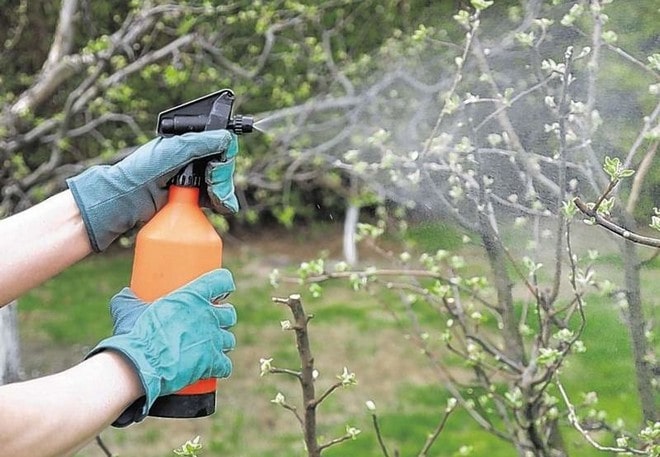

Apple tree treatment for aphids.
There are a number of methods for treating an apple tree from aphids:
- folk drugs;
- biological control methods;
- physical effort.
The choice of means of control depends on the amount of the pest, its prevalence and scale.
How to treat
Aphids are a serious problem for all apple varieties such as Spartan, Currency, Royalty and others, so the chemical industry is releasing several new chemical options to combat it. Those who are not an adherent of treatment with pesticides use folk methods of struggle or natural biological ones. These solutions are more gentle for apple trees, but at the same time less effective and possible at the earliest stage of the disease.
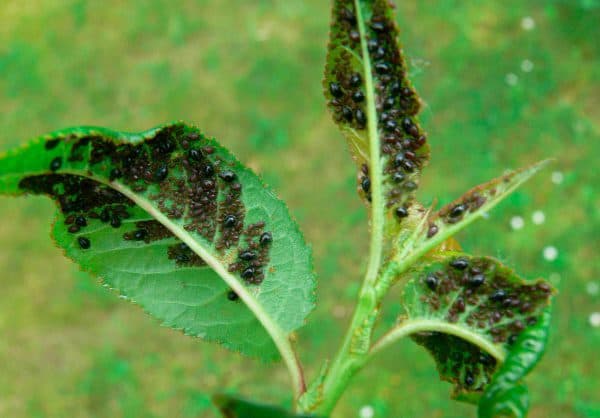

In each case, a different method of struggle is applied, often gardeners compile several methods, thereby achieving the most stable result.
Aphids spread such diseases, which are almost impossible to get rid of. For example, gall formation and mutation of branches, fruits.
Chemicals
The most optimal time for treating apple trees with chemicals is early spring. Thus, you cause minimal harm to the development of fruits and their composition. Otherwise, apples can absorb harmful substances and have a negative effect on the body. Read about planting an apple tree in spring here.
Also, in the spring, the leaves are just blooming and the active ingredients cannot burn them. But the larvae wintering on the bark of a tree will be destroyed in their embryonic state.
Gardeners identify several of the most popular and easy-to-use tools:
- Nitrafen. The chemical agent "Nitrafen" is diluted at the rate of 200 grams per 10 liters of water.
- Oleocobrite. It is bought either ready-made, or a 4% solution of the substance is made from the concentrate.
- Kinmix. The action of the product begins one hour after spraying and lasts up to 3 weeks.
In addition to these, there is also Karate, Inta-Vir, which are economical and highly efficient. All chemical compounds have a wide spectrum of action and destroy, not only apple aphids, but also other species of insects. The above drugs, even in diluted form, have a large share of toxicity, therefore they are used only at the stage of budding. Further, more gentle materials are used, for example, Spark or Cypermethrin.
Spark
Spark is available in tablet form, which is convenient for storing chemistry and dilution. 1 unit is applied per 10 liters of water, while for the highest effect the apple trees are sprayed every 3 weeks. At the same time, spraying of Uralets, Ranetki and other varieties begins as a preventive measure immediately after flowering.
For the entire period, apple trees are processed from 8 to 16 times. Moreover, the most frequent spraying is necessary in the southern latitudes.
Cypermethrin
Cypermethrin - causes complete paralysis of aphids, leading to death. It is a powerful drug capable of killing larvae in one application. The substance is diluted in water according to the instructions, without allowing an increase in concentration. The latter is regulated depending on the stage of the disease. That is, in the presence of live individuals, the concentration of the active substance is increased.
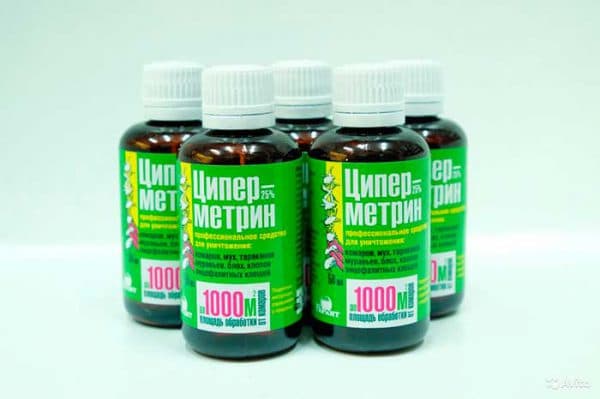

All processing is carried out in rubber gloves and a respirator, since vapors can negatively affect the respiratory system. Watering cans, sprayers are used exclusively for chemical. solutions.
Decis
Decis is the oldest and most tested drug by gardeners. It has gained popularity for its efficient use and wide range. They are sprayed with not only apple trees, but also pears, fruit bushes, apricots, plums. Find out about planting and caring for the Talgar beauty pear here.
Dilute it, according to the instructions, and the result is noticeable on the 3rd day after treatment. An analogue of Decis is the drug Aktara.
Traditional methods
Traditional methods are good in the initial stage of the disease or as an addition to chemical treatment during flowering and fruit setting.Gardeners prepare such preparations themselves from products that grow on the site, or that are easy to get in nature. This link will tell you about the processing of currants from aphids.
Ash
Ash is the most popular and available for processing. It is poured onto the root system, apple trees are sprinkled with it, and it is also diluted in water at the rate of 400 ml of dry matter per 10 liters of water. In addition, for a more sticky effect, rub with tar or laundry soap.
The ashes are allowed to brew for about a day, then they are processed, trying to disinfect the back of the sheet.
Sometimes onion peel or celandine is also mixed with ash. In this case, they insist for two days.
Ammonia
Ammonia or ammonia is diluted at the rate of one bottle per 15 liters of water. In this case, they are sprayed either in the morning or in the evening, after sunset. Thus, you protect the leaves from overheating and prevent them from burning.
Ammonia has a pungent odor, so a respirator or protective bandage should be worn before dilution. To increase the viscosity, laundry soap is added to the mixture.
Small, low apple trees are treated with ammonia and exclusively from a watering can. Since with fine dispersion, ammonia evaporates from the solution and does not have a healing effect.
Tobacco
Tobacco is processed at any stage of the growing season. In this case, 2 methods are used:
- In a diluted form. Pour 200 grams of sifted tobacco into 10 liters of water. Then the composition is boiled for about 2 hours and cooled. Apply 1-2 times a week, with the addition of a soap base before spraying.
- Fumigation. This method has been used for many years in all villages. In this case, a fire is kindled in the bucket and tobacco dust is dispersed over it. Make sure that the white smoke fumigates the crowns. This procedure is carried out for several hours, until the aphids are completely destroyed.
Cunning gardeners initially plant tobacco between the rows of apple trees, the strong smell of which scares away insects from the garden.
Soap
As can be seen from the previous methods, the soap base is present as a binder in all variants. In this case, either household or tar soap is used. A piece is rubbed on a grater or take a natural version of liquid soap.
Soap is rarely used as an independent means, most often it is mixed with tobacco, ash or kerosene. Sometimes the components are combined in one medium. Read about growing and caring for glandular cherries in this article.
Spice
Aphids are afraid of sharp-smelling spices: pepper, cinnamon. They are diluted in 10 liters of water along with soap and the apple tree is treated every 5 days.
Hot peppers in pods, in an amount of 100 grams, are crushed and boiled in 1.5 liters. Then they insist for 2-3 days, filter and dilute in cool water at a rate of 1 to 10. Immediately before spraying, add 40 g of soap.
Soda
Baking soda fights aphids and at the same time enriches the tree with calcium, has a disinfecting effect and promotes the regeneration of the green part of the apple tree.
The composition is usually done as follows:
- 1 liter of water;
- 200 g of soda;
- 1 spoon of calcium chloride.
All ingredients are slightly heated to dissolve the baking soda and 30 grams of soap is added at the end.
It should be understood that traditional methods are not a panacea in the fight against aphids, and may not be effective in advanced stages.
Biological methods
Biological methods - creating natural conditions that contribute to the elimination of aphids. For example, there are plants that repel insects by the smell or ladybugs that eat aphids with pleasure. Also, farmers eliminate anthills in the apple orchard, since ants are very fond of breeding aphids for the sake of its juice.
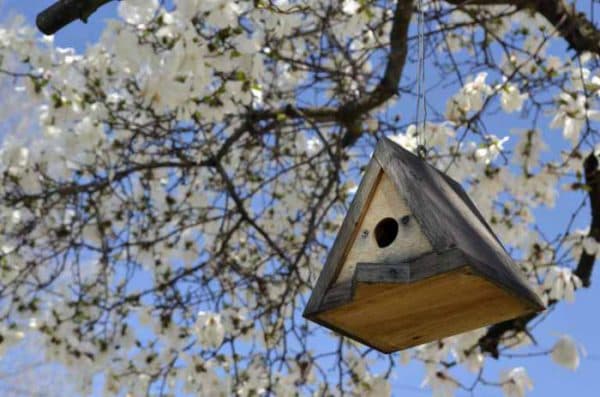

Birds are known to eat aphids, so gardeners build nesting boxes near the garden, planting fragrant herbs and nettles, which attract birds to apple trees.
Birds that eat aphids: sparrows, robins, tits. Insects - ladybugs, flies, lacewings, wasps.
Drugs
Biologicals are made from extracts and essential oils of natural plants and are more loyal to chemicals. This includes: Aktarin, Aktofit and others.
The peculiarity of natural preparations is that they are used without reservations in all stages of the growing season, including when the buds are ripening.
What to plant under the apple tree
Experienced gardeners are planting plants next to the apple tree, which aphids scare away. Thanks to this, it is possible to avoid its appearance on trees in principle. These specialized plants include:
- lavender;
- chamomile;
- marigold or calendula;
- tomatoes (suitable only for southern latitudes);
- garlic;
- tansy.
There is also a list of plants, the smell of which, on the contrary, attracts aphids:
- nasturtium;
- poppy;
- cosmeya;
- mallow;
- viburnum;
- Linden;
- begonia.
Aphids on an apple tree: how to fight in the summer by months
It is very important to know which remedies to use in which summer month. This is important so as not to harm fruits and beneficial insects.
June
At the beginning of summer, at the first signs of the onset of the disease, treatment should be started immediately. The first treatment, if it is carried out at the beginning of the month, should be Anabazine sulfate or its analogues. Their action is long-lasting and fast.
In the middle of the month, you can use one of the folk remedies. A tincture of 50 g of hot pepper, diluted in 7 liters of boiling water, with the addition of soap helps very well.
In the third part of June, drugs based on Tiacloprid are used. They are thoroughly sprayed to moisten the trunk and branches completely.
July
Midsummer is the hottest time. If in the first month spraying and control activities were carried out, then in July much less effort needs to be made.
If the apple trees are young, dwarf or growing on palmette, then all the tips of the young shoots of this year should be cut off on them. This will remove as many insects as possible. After that, you need to carry out processing with folk remedies so as not to harm the fruit.
Tall autumn or winter varieties can still be treated with insecticides. It is better to use complex preparations with Dimethoat or Chlorpyrifos in the composition.
August
In the last summer month, the apples are already starting to pour, so you need to be very careful not to poison the entire crop. Imidacloprid is considered optimal, which is effective and safe.
A good safe remedy is superphosphate, from which a decoction is prepared. To do this, it is enough to boil a glass of granules for about 15 minutes. This treatment will also be an excellent food for the sweetness of the fruit.
What does apple aphid look like? Description of the species
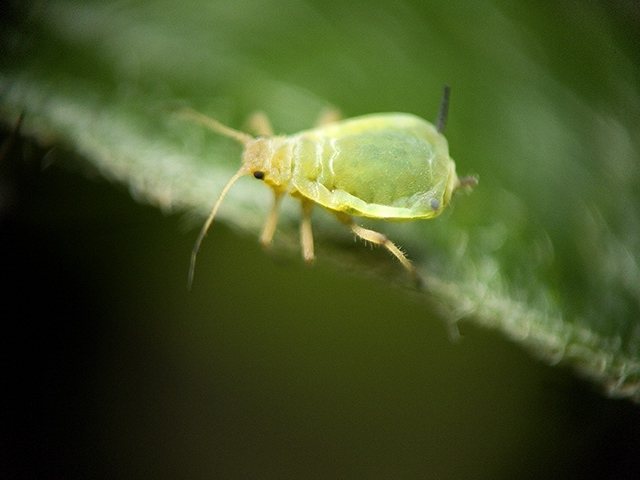

Apple aphid, appearance, photo
The green apple aphid (Aphis pomi) belongs to the family of true aphids (Aphididae), genus Aphis.
According to morphological characteristics, the following groups of aphids are distinguished:
- Founders are females that emerge from eggs in the spring. Their body is pear-shaped, the body length is about 2 mm, it has a bright green or yellow-green color. The head and limbs of individuals are brown. In the founder, the antennae consist of 6 segments; they are yellow with a dark apex. The tubes have a cylindrical shape, tapering at the end, they are black.
- Wingless virgins are similar in appearance to the founders. They are born by parthenogenesis.
- The winged virgins are 1.8 mm in size. They have black limbs, a tube, a tail and a head, they have a green belly. On the sides, closer to the head, there are black spots. Antennae are yellow, wings are transparent. Winged females appear at the beginning of summer, they contribute to the spread of aphids on other trees.
- Females are 1.6 mm long. They are yellow-green or brown in color.The tail and tube are dark. Females have no wings. They are capable of ovipositor by fall. They need males to reproduce.
- Males are smaller - only 1.2 mm. In appearance, they are similar to females.
Apple aphid life cycle
Aphids overwinter in the egg stage. It is important that the egg passes the stage of winter dormancy, then the development of the insect will be successful.
The larvae hatch in the spring, during the budding of apple trees. The process takes 6-7 days. The larvae first feed on green buds, after which they move to leaves and buds.
Adults appear closer to the flowering phase. Within 20-30 days, the founder gives birth to 80-120 larvae.
Wingless virgins develop from larvae in 8-12 days.
In the period from late May to early June, winged females appear, they fly to neighboring trees, thereby infecting them and spreading new generations around the garden. Settlers place their offspring on the tops of shoots, petioles, undersides of leaves and sometimes fruits.
The largest number of pests occurs in mid-July.
By autumn, in September-October, males and females appear, laying eggs. The mating period is fast. The female lays 1-5 eggs. With the help of a special adhesive composition, females attach eggs to young shoots. At first, the eggs are light green, but then they become shiny and black.
Nuances and subtleties of aphid treatment
In order not to lose the apple tree, you need to carry out the protection in a comprehensive manner. It is important to save both the tree and the harvest.
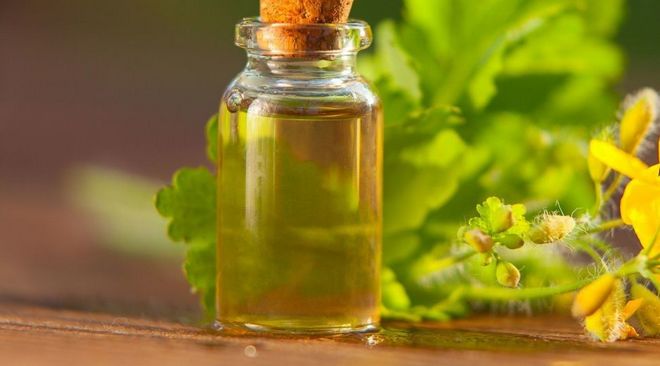

Celandine is a remedy that helps with aphids.
Traditional methods
To prepare decoctions against green apple aphids, you can use wormwood, garlic, celandine and yarrow.
Infusions are prepared from tobacco, makhorka, walnuts or hot pepper.
Before spraying by any means, soap or detergent must be added to the composition of the substance so that it adheres better.
After flowering
After the apple trees have stopped blooming, you also need to carry out processing. A solution of soda and ash helps a lot. From plants, you can use chamomile, celandine, horse sorrel, dandelion, wormwood or yarrow.
Conservative methods
Some gardeners fundamentally do not use chemicals, but use conservative methods: they cut off damaged parts by hand or attract beneficial insects that eat aphids.
Spider aphid on an apple tree
This is not a special subspecies of an insect, but a complex of pests in symbiosis. At the tips of the branches, not only young leaves are twisted, but, moreover, are completely covered with cobwebs. Treatment will only be effective with chemicals.
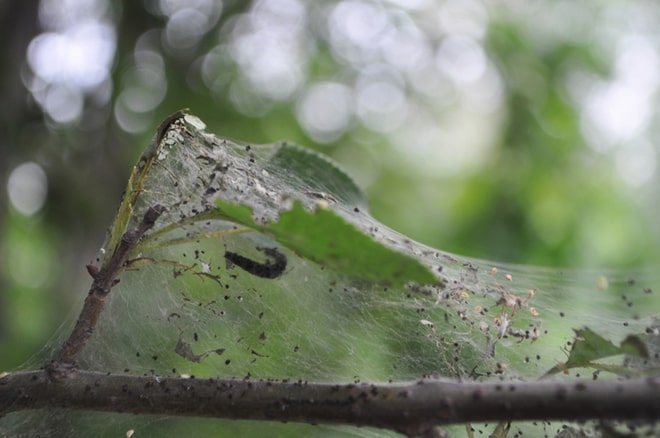

Spider aphid on a tree.
Protective measures against green aphids
This type of aphid is destroyed with timely phosphorus fertilizers and pruning of damaged parts. You need to fight ants and attract ladybirds to the site.
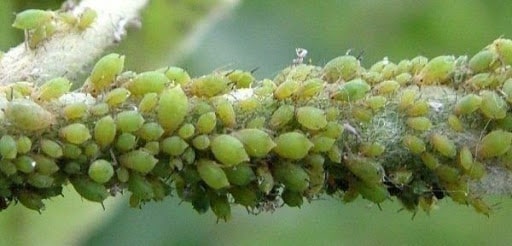

Green aphid on an apple tree.
If there are aphids and ants on the apple tree
The fight against aphids and ants will need to be carried out in a comprehensive manner. For aphids, use folk remedies, for example, a decoction of wormwood, and with a large number of pests, Imidacloprid. Diazinon is used for ants.
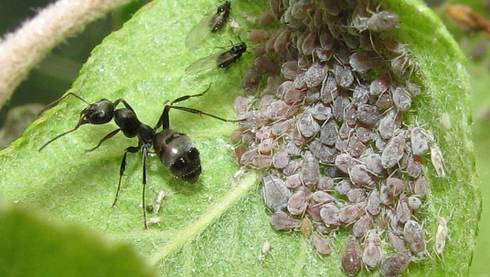

Aphids and ants on the leaves of the apple tree.
What is the harmful phase in aphids
One female lays over a hundred eggs, which later become very voracious pests. The time span from when females hatch from eggs to the moment they lay eggs is very short. At this time, they gorge themselves as much as possible and harm the plants.
Wrestling on a blooming apple tree
During flowering, chemicals should never be used. The only salvation during flowering can be the use of an infusion of garlic or hot pepper. To make the composition stick, you need to add soap.
Protection of seedlings from aphids
On young plantings, it is better to prevent the appearance of aphids. After all, even a small amount can quickly destroy a young tree.If it manifests itself a little, then it is better to assemble it manually. With a large number of pests in a young garden, superphosphate should be scattered into the trunk circle. Shoots need to be sprayed with shag or tobacco infusion.
Insect description
Aphids are small, shellless insects that can exist in almost any climatic zone. These insects multiply very quickly, so it is important to start controlling their population in time before the next reproductive period. During one season, aphids can give birth to several generations of these translucent small pests. The good news is that these bugs move very slowly, and control of the aphid population is relatively easy and does not cost the gardener too much.
Of the more than four thousand species of aphids, about 250 of them are considered harmful to crops and especially fruit trees. These insects are also known as green flies or plant lice. Aphids are among the most famous and successful garden pests in the world. Tiny insects pierce the stems of plants, preferring the tender stems of fresh leaves for food, sucking out the nutrient-rich sap, thus depriving the plant of vitality.
The process of aphid infestation of a tree can start rather slowly, but if this stage is skipped, the insect will begin to multiply rapidly and, ultimately, can completely destroy the plant. Fortunately, there are many ways to keep aphids in check, using a variety of chemicals and organic products that will not harm the health of your garden and future crops.
Pest identification
Aphids are tiny (adults rarely grow to a size of 0.5 cm) and often almost invisible to the naked eye. The different types can be white, black, brown, gray, yellow, light green, or even pink! Some species may have smooth (very waxy) or hairy coverage all over the body.
They have pear-shaped bodies with long antennae. Most species have two short tubes (proboscis called cornicles) that protrude from their posterior end of the body. Adults are usually wingless, but most species can develop a winged form, especially when the population becomes very large and the amount of food decreases. Then insects can easily travel to other trees, reproduce offspring and form a new colony.
Aphids usually settle in large groups, although sometimes you will be able to see them individually or in small numbers (but this is rare). Insects feed on a very large number of plants, but most of all prefer fruit trees.
Mechanical protection methods
Of physical traps and baits, they use trapping belts... For this, a masking tape is taken and wrapped around the trunk (about half a meter from the ground). A sticky layer of glue from rodents and insects is applied to it along the circumference of the trunk.
Disadvantage: on hot days the glue runs off.
You can wrap it around the trunk below the masking tape foam layer and its upper part also grease with glue... This method is more reliable. Neither ants nor aphids can climb the trunk.
Treatment of apple trees from pests in the summer than to spray in July, August - professional advice
There are some agrotechnical techniqueshow to save an apple tree from ants and aphids, but they ineffective:
- Picking up weeds and digging the garden;
- Removing aphids from foliage manually;
- Rinsing off with a powerful jet of water.
Preventive measures can also be used. Such, for example, as ant control, attraction to the site natural enemies aphids.
Attention! Do not overfeed the tree with nitrogen fertilizers, because it is the young greenery that attracts aphids.
Signs of damage to currant aphids
The currant bush opens its buds early, and a good refuge with a green forage base appears for the overwintered aphids. Parasitizing a pest can be suspected by general signs:
- curvature of the petioles, cessation of growth and development of currant shoots;
- shortening of internodes;
- winter dying off of damaged plants, delayed bud opening in spring;
- slowing down the general development of the currant bush, reducing yields and deteriorating the quality of berries.
A characteristic manifestation of the gooseberry aphid in black currant. On the top of the bush, curled shoots and twisted leaf plates are clearly visible. The bending of the affected sheets occurs downward and inward. The ovary looks like a lump of greenery, inside which a colony of insect pests lurks.
What does a red or white currant affected by a gall aphid look like? In the central part of the leaves, red tubercles, swellings and spots are noticeable. The branches acquire a reddish-brown bloom and small growths. Sometimes, because of the bright color of the affected areas, the pest is called the red-headed aphid.
Aphid development cycle
An adult fertilized female aphid lays hibernating eggs on the branches and bark of trees, perennial shoots of shrubs, trying to place them near the buds, on spinning tops. Eggs are oblong-oval, black, up to 0.5 mm long, visible to the naked eye. “Knowing” that it is warm under the snow, the female aphid lays eggs on the root shoots and weeds. During wintering under the snow, almost all clutches survive. Aphids and "household" ants take care of the eggs, taking the eggs to their underground dwellings until spring, and in the spring with the onset of warmth, they carry eggs to old branches, young shoots, and leave them on young leaves.
Overwintered eggs develop several generations (2-4-8) of wingless females, which reproduce without males. In June-July, winged forms of settling aphids appear. Aphids, scatter, especially with a tailwind, up to 25 km, spread over the same crops. These are monoecious aphids, and there are also species with a dioecious development cycle. They begin their spring development on the main host, with the appearance of winged forms for the summer period they fly to nurseries (the second host) - various herbaceous plants, weeds, vegetable crops, and in the fall they return to the main host to lay eggs. In autumn, after mating, the female aphid lays fertilized hibernating eggs.
Gloomy statistics! Each female lays up to 100 eggs for the winter. Of these, 100 females develop, which mature in 1.5-2.0 weeks and themselves lay an average of 100 eggs. During the growing season, one female is able to increase the offspring to 15-20 thousand pests per season.
Thus, aphids have 3 most vulnerable periods, when their destruction will contribute to an overall decrease in the number of these pests in the garden: careful autumn preparation for wintering, the period of flight of female settlers, the appearance of winged males and return to the owner. This does not mean that the rest of the time you do not need to process the trees. Hatching takes place every 2 weeks and the processing of trees and shrubs, respectively
3 highlighted periods - maximum damage, during this period you need maximum attention and mandatory processing of plants
Life cycle of aphids
Lifestyle and harmfulness
Apple aphid parasitizes various plants of the Rosaceae family. Found on hawthorn, mountain ash, medlar, cotoneaster. Pests prefer young shoots, keep on the back of the leaves. From the influence of phytophages, the leaves curl, and the shoots darken. Aphid larvae emerge from the eggs at the moment the apple buds open. Adults appear before the flowering phase. Females begin to reproduce, bringing 80-100 larvae each.
Information.Aphids are most harmful to nurseries. Young trees with a strong infestation with parasites can die.
At the beginning, the number of aphids in the colony increases and winged females appear. They fly to neighboring trees, infecting new plants. By autumn, normal males and females are born in the group, which copulate and lay eggs. The masonry is placed near young shoots, glued with a special compound. Red spots appear on the leaves and fruits where the aphids feed. From a lack of nutritious juices, plants dry out and deform.
Chemicals
It is best to treat the garden with synthetic compounds in the spring, when the leaves of the plants have not yet blossomed. Then the probability of burning them with chemical solutions will be minimal, and most aphid larvae will die.
| Drug name | Application features |
| Nitrofen (200gr) | The product should be diluted in a bucket of water. It is necessary to spray infected apple trees in the spring, when the buds swell. |
| Oleocobrite 4% | The drug is actively used by gardeners to destroy the eggs of aphids. |
| Kinmix | Apples treated with the product will not be able to decay any type of phytophages. The duration of the defense is 21 days. |
| Intavir, Karate | Broad-spectrum drugs. One treatment of apple trees with Intavir is not enough for the complete destruction of insects that rot leaves. When re-spraying, there is a high risk of damaging the green mass, so it is better to use weaker products: Spark, Cypermethrin, etc. Chemical preparation Karate helps to fight against aphids in large areas: 10 liters of the product is enough to treat 100 sq. M. |
The use of the Iskra composition prevents parasites from smoldering apple trees during the growing season and actively destroys their larvae. Enough 1 tablet for a bucket of water. The treatment is repeated after 20 days.

